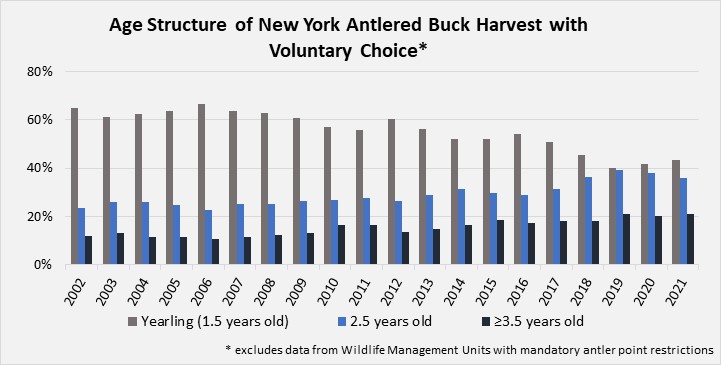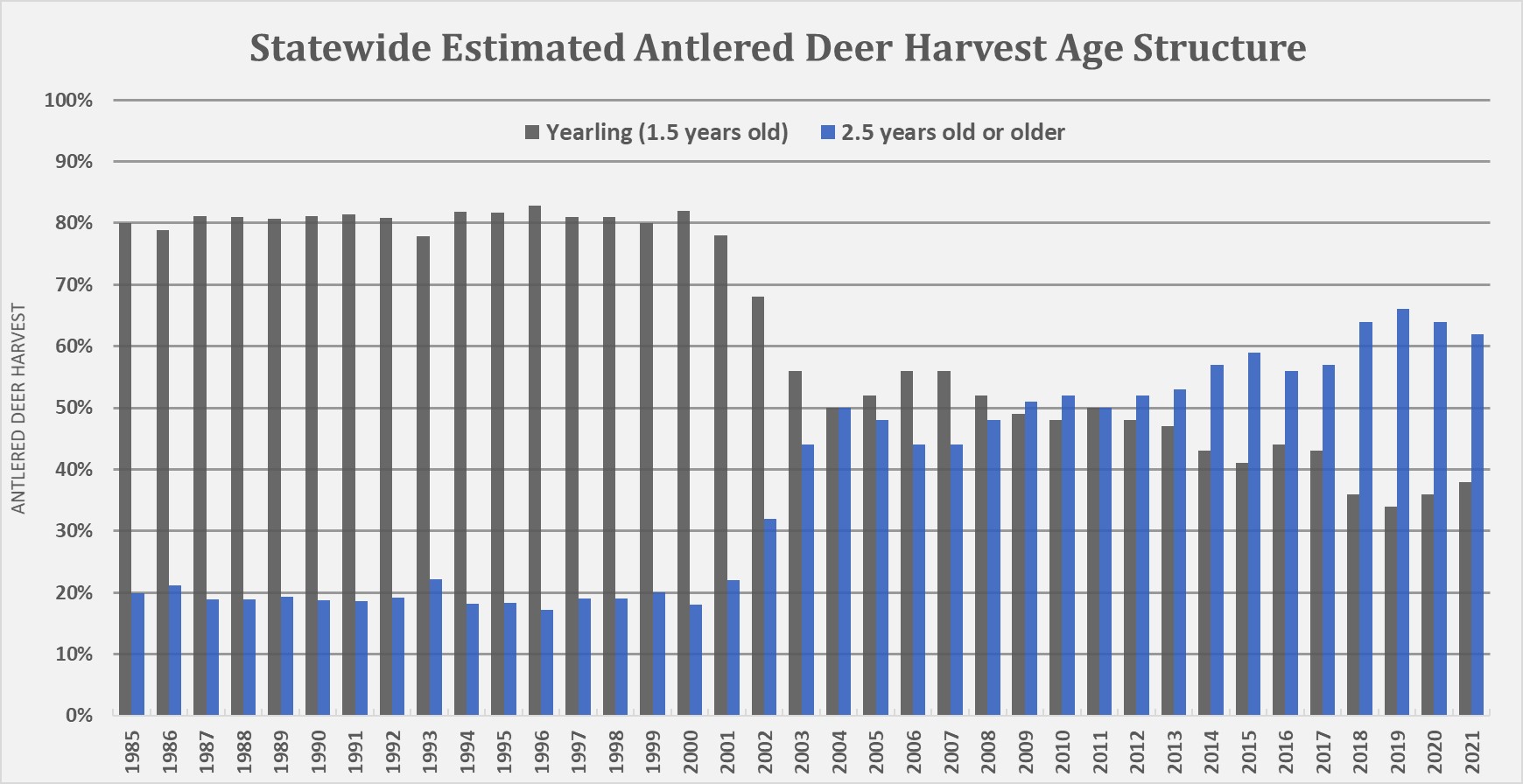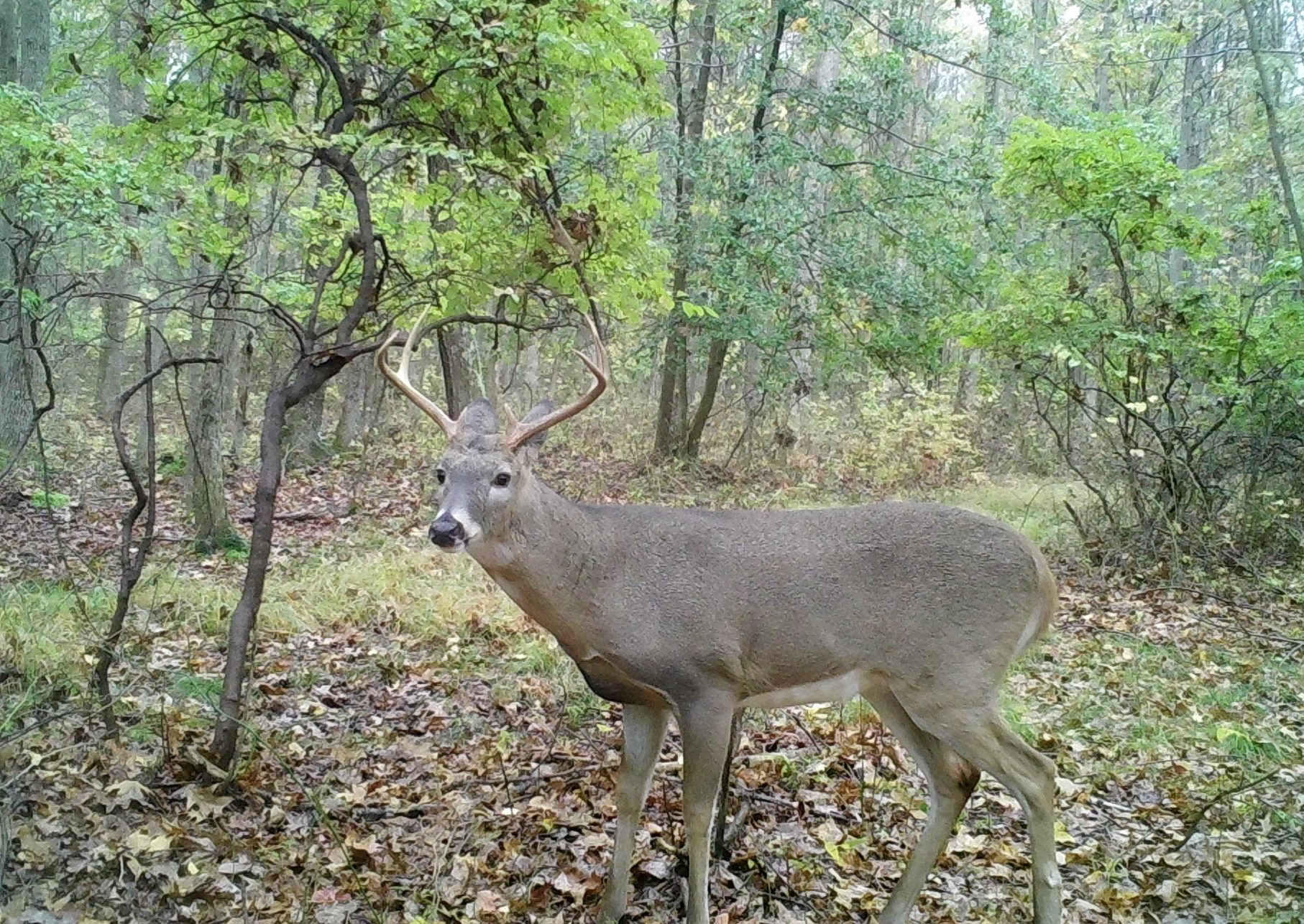I was perusing the latest issue of the Wildlife Professional in search of an interesting topic for the blog. The “Science in Short” and “State of Wildlife” departments highlight newly published research and wildlife happenings across the country. There are sometimes a few gems in there that spark my interest.
A gem that caught my eye was recently published paper from New York looking at antler point restrictions. Antler point restrictions (APRs) have been the law of the land in Pennsylvania for 20 years now. I don’t even give APRs a second thought now. It’s just part of deer management now.
That, of course, was not the case in 2002 when they were first introduced. It was a HUGE deal and launched the research program that made the Deer-Forest Study possible. Over 500 bucks were collared and 1,000s of hunters were surveyed to track the biological and social outcomes of such a regulation. So much data was collected that it could not be contained in a journal article. Instead, it was published in a 26-page monograph.
The long and short of it – APRs, designed to protect 50% of yearling bucks from harvest, did just that and a majority of hunters remained supportive of it. Today, over 60% of antlered harvest are adults (prior to APRs, that was ~20%) and hunter support of APRs remains high with over 60% of hunters in favor. The only other thing you can get that many hunters to agree on is that they want higher deer numbers.
Other states have toyed with APRs at the unit level usually at the request of hunters. None have quite reached Pennsylvania level success or support. That is until I read the NY study. They implemented APRs in several Wildlife Management Units (WMUs) in 2005, added a few more in 2006 and again in 2012. The mandatory antler restriction reduced the proportion of 1.5-year-old bucks in the harvest from >60% to <20%.
But that is not the surprising part. They also saw a decrease in yearling buck harvest in WMUs adjacent to those with the mandatory restrictions – from 62% yearlings in the harvest to 45%. In 2016, after a review, NY DEC implemented an educational campaign to encourage hunters to voluntarily pass up yearling bucks.

New York with its 2 buck bag limit is seeing yearling buck harvest decrease across the state.

This graph reflects the same period in which APRs were implemented in Pennsylvania. It’s not dramatic but there is a slow and steady drop in yearlings over the last 20 years.
This is what historic buck harvest age structure looks like in Pennsylvania.

This begs the question. Could Pennsylvania have used the carrot approach and gotten the same result (i.e. decreasing yearling buck harvest)?
It certainly would not have been as quick. Pennsylvania had a 30% drop in percentage of yearling bucks in the harvest in a 4 year period. Last hunting season percentage of yearling bucks in the harvest was half that of pre-APRs.
New York’s percentage of yearling buck harvest wasn’t quite as high as Pennsylvania, but it took 20 years to drop it 20%. A slow change in hunter behavior perhaps facilitated by a new generation of hunters entering the ranks.
But it does illustrate the power of proper communication.
-Jeannine Fleegle
Wildlife Biologist
PA Game Commission
